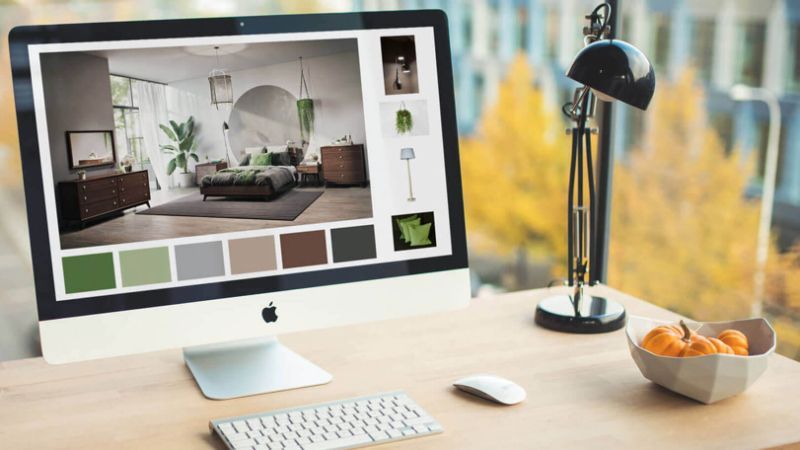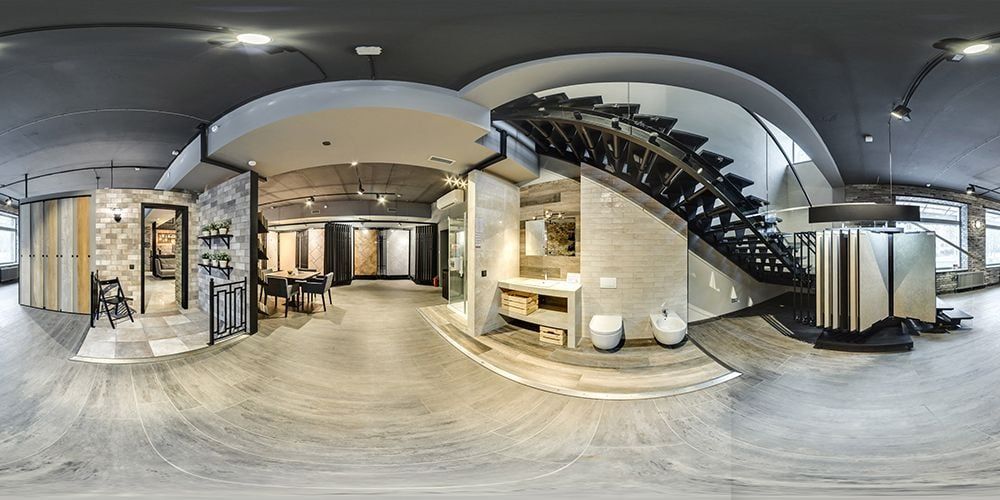In a competitive eCommerce environment, finding new ways to catch the consumer’s attention is crucial. Gaining their trust is even more vital.
In the aftermath of COVID-19, increasingly more consumers are reluctant to spare time and effort for offline shopping. But consumers become increasingly more exacting when making online purchases. It is especially true for the furniture and home decor industries. The buyers want to know precisely how big the item is, what the textures are, and whether it will work with the existing color palette. Simple photos and videos are no longer enough to convince the consumer to make the decision. And the return rates are high because traditional methods do not paint the full picture.
3D product services offer solutions that allow the consumer to make their online shopping as similar to in-person as possible. The manufacturers, in turn, reduce the production time and expenses. They save on brick-and-mortar stores’ rent, furnishing, and personnel. Most importantly, they have stellar marketing materials.
As a 3D rendering company, we closely follow the development of any new technologies which can be used to design, manufacture, promote and sell furniture. Want to know what 3D imaging services can give a boost to your business? Read on to learn about top-5 solutions!
1. AR Allows Trying Out New Items in Any Space

Scan QR code to see this product in augmented reality
Augmented Reality (AR) technology allows users to combine real space and virtual objects using their smartphone or tablet. Superimposition-based AR, which is the most useful for furniture marketing, adds photorealistic 3D product services to the real scene. Thanks to the accurate rendering of real and digital objects, AR allows the consumer to understand how the product looks far better than simple photos. Moreover, the buyer can virtually try out any product from the catalog by moving it around the room. They can easily see whether the piece fits and suits the room.
Unlike VR, AR doesn’t require any extra equipment, which makes it perfect as an in-app feature. Social commerce is on the rise and makes brands look for increasingly more creative ways to engage the audience. Snapchat and Instagram use AR for their filters. Introducing filters that allow users to virtually play around with your furniture will boost brand awareness. Filters are also a great way to increase engagement with the younger audience. They will also provide you with some impressive user-generated content for your account.
The market monsters like IKEA and Amazon use AR technologies in their own apps. IKEA Studio allows the user to redecorate entire rooms. The user can virtually place products, play around with wall decorations, install some shelves, and so on. The “View in Your Room” option in the Amazon app also allows virtually placing the products in your space. The Home Depot, Wayfair, Overstock, and other brands and retailers are using AR in their apps.
COVID-19 restricted in-person shopping. As a result, retailers using AR experienced a 19% boost in engagement. Customer conversion rates are 90% higher for the retailers in comparison to the competitors which don’t use the technology.
2. 3D Configurator Makes Models Interactive

Product 3D Configurator is one of the newest digital tools. It’s a 360-degree view model taken to the next level. This method of 3D product imaging allows a buyer to not only view an object from all sides but also interact with the imaging and customize it. The consumer can try out different colors, textures, and materials. They can either buy an existing item or order a custom-made one with the chosen specifications.
Professional 3D product services provide a far more comprehensive understanding of the item than simple photos, videos, and text descriptions. By interacting with a 3D object, buyers can get almost the same experience as if they were actually touching it. They can place the 3D model into lifestyle pictures to imagine how the product will look in an interior like theirs.
Being able to see the object from all sides and place it in an environment increases the chances the customer gets all the necessary information about the future purchase. This way, they will not return it because it turned out to be a different size or doesn’t go well with the wallpapers after all.
Product 3D configurator is even handier if you offer any customization options. Your customers can play around with the size, materials, textures, and colors. Then they can simply send you a PDF with the specifics. It will ensure they have a nice, game-like shopping experience, and you don’t have any misunderstandings.
3. 3D Printing Saves Time, Money and Boosts Creativity

3D printing is a relatively new technology, which in recent years changed the game in many industries. From tools to the whole building, there’s nothing that can’t be printed.
In furniture manufacture, 3D printing comes into play at the design and prototyping stage. It simplifies, reduces costs, and makes the process of designing the product more efficient. Instead of manufacturing the prototypes, brands can simply print them, which makes the whole process quicker and far less costly. 3D printing makes entering the market easier and allows to lower consumer prices.
In comparison to the traditional manufacturing methods, 3D printing also allows more room for experiment and creativity. It reduces manufacturing costs and makes it possible to create designs that would be impossible to embody in traditional materials. The most intricate interactive pieces can be printed in one go, without any need for assembling.
4. Virtual Showrooms Replace Offline Shopping

Virtual or digital showrooms are an innovative way to bring retail online and eliminate the need for physical showrooms and trade shows. The customers can review the entire new collections online and place their orders on the same platform.
In the wake of COVID-19, virtual showrooms are becoming increasingly popular. They work incredibly well with home goods and furniture, beauty and fashion, and even automotive industries. Virtual showrooms are especially convenient for B2B sales – after 2020, up to 80% of B2B buyers prefer interacting with their providers remotely, or even opt for online self-service.
There are quite a lot of benefits to virtual showrooms. They reduce costs for maintaining physical stores or participating in trade shows. They also allow starting marketing before the products are even physically produced. With virtual showrooms, the company can use the data it gathers to boost sales. And, of course, the business can be expanded geographically and made available 24/7. Interactive and live virtual showrooms help sellers to foster relationships with their customers, at the same time eliminating the need for brick-and-mortar stores.
It is vital to showcase the products in the most comprehensive way to imitate the feel of real shopping. A broad variety of 3D modeling technologies, including 360-degree view models and AR, can be used to showcase the goods. The sellers can use 3D imaging to make online shopping as close to in-person as possible.
5. Rapid Prototyping Makes Design Process Easier and Cheaper

What is rapid prototyping? It is a technique that allows the creation of design prototypes quicker and at lower costs. Various technologies can be used for such prototyping, but most often it is based on 3D printing.
With the use of 3D product services, it is easier to make corrections to the designs. 3D models allow the designers and production team to get the feel of the size, proportions, materials, and colors of the future item before committing to a physical model. Moreover, the prototypes, which are supposed to be constantly remade and improved, can be produced almost immediately. Using 3D printing, the whole process is a matter of minutes or hours. This way manufacturers can make the process even more efficient by producing several prototypes for one product at once.
In comparison to traditional prototyping, rapid prototyping saves on production costs and materials. Thanks to that, it is more sustainable. If the company uses 3D printing for rapid prototyping, it ensures the work stays in-house and eliminates any data leakage through third parties concerns.
In a competitive eCommerce game, it is vital to use the newest technologies to attract and retain customers. At all stages, from design to manufacturing to marketing, 3D product services offer the solutions. If you are looking for innovative 3D rendering services to streamline your production or up your marketing game, reach out to our team!
